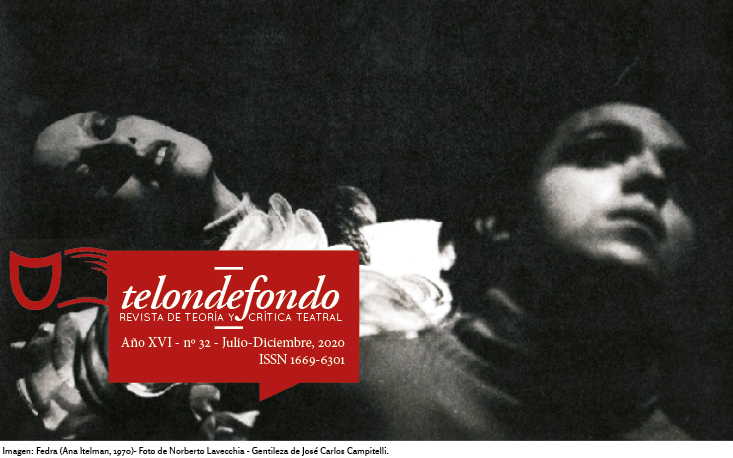Towards a Sociology of Buenos Aires Art-Theater: an Approach based on Practices.
Procedures by Matías Feldman, Guillermo Cacace and Mariana Obersztern
Abstract
Based on the idea of procedure, both regarding creation and staging, we seek to analyze some formal constructions by three important creators of Buenos Aires theater today from a sociological perspective. If we follow the field model developed by Bourdieu, the focus of this article can be set in the “art for art’s sake” pole. However, we are especially interested in addressing the practices of artists from the perspective of a pragmatic sociology in Boltanski's terms, which is why we will seek to outline the methodological and aesthetic differences of the creators. To do so, we will address the experiences of three artists who reject realism as "mimetic representation" in favor of a reality of art, according to Danto’s well-known formula. Firstly, Matías Feldman and his methodology of superimposed and in transit expressive states for acting and of technical imagination for the writing and formal composition of works. Secondly, Guillermo Cacace, who seeks in his workshops to develop a "connection" or an "in-between" that builds a form of acting based on the bond between actors regardless of the text’s plot. Finally, we will approach the compositional strategies of Mariana Obersztern who opens the construction of expressive states towards a notion of performance.Downloads
Copyright (c) 2020 telondefondo. Revista de Teoría y Crítica Teatral

This work is licensed under a Creative Commons Attribution-ShareAlike 4.0 International License.
Los autores/as que publiquen en esta revista aceptan las siguientes condiciones:
-
Los autores/as [traductores] conservan los derechos de autor y ceden a la revista el derecho de la primera publicación, con el trabajo registrado con Licencia Creative Commons Atribución-NoComercial-CompartirIgual 4.0 Internacional, que permite a terceros utilizar lo publicado siempre que mencionen la autoría del trabajo y a la primera publicación en esta revista.
-
Los autores/as pueden realizar otros acuerdos contractuales independientes y adicionales para la distribución no exclusiva de la versión del artículo publicado en esta revista (p. ej., incluirlo en un repositorio institucional o publicarlo en un libro) siempre que indiquen claramente que el trabajo se publicó por primera vez en esta revista.
-
Se permite y recomienda a los autores/as a publicar su trabajo en Internet (por ejemplo en páginas institucionales o personales).











